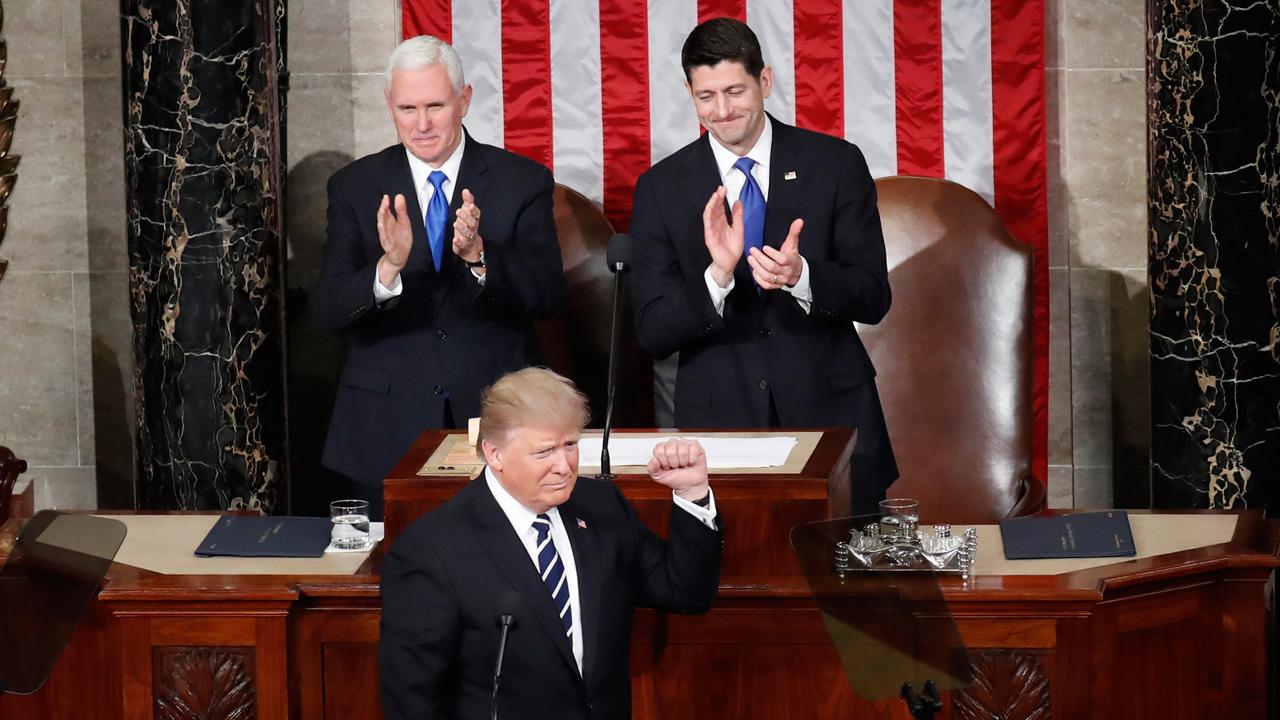Trump’s State of the Union: Check in on 2018 promises
As America prepares to watch President Trump give his second State of the Union address on Tuesday night, many will look back at a number of the assurances that were made about one year ago – and whether they were fulfilled.
The speech comes amid tension between the president and Democratic leadership over funding for a wall along the country’s southern border – which threatens to shut down operations at the federal government again next week unless the two parties can reach an agreement.
Last year was Trump’s first address to the nation. Here’s a look back at some of the things he said and what has happened in the year since.
Drug prices
During his last address, President Trump touted the administration’s expedition of the generics approvals process, which he said led to the approval of more new and generic drugs and medical devices “than ever before in our history.” He also specifically cited reducing drug prices as a top concern.
“One of my greatest priorities is to reduce the price of prescription drugs,” he said. “In many other countries, these drugs cost far less than what we pay in the United States. That is why I have directed my administration to make fixing the injustice of high drug prices one of our top priorities. Prices will come down.”
The president tweeted last month that drug prices declined last year for the first time in nearly 50 years. He also said that during the first 19 months of his presidency Americans saved a collective $26 billion on prescription drugs.
Trump successfully lobbied some pharmaceutical companies not to raise their drug prices over the summer. However many companies – including Allergan and Pfizer — did so at the beginning of 2019.
While prices are increasing, growth slowed since January 2017, according to a report from the Council of Economic Advisers. A separate report conducted by The Associated Press found that while there were fewer price increases between January and July than comparable periods from years prior, companies were still more likely to hike prices than cut them.
Trade
“We will work to fix bad trade deals and negotiate new ones,” Trump said last year. “We will protect American workers and American intellectual property, through strong enforcement of our trade rules.”
Over the past year, the White House has worked out a renegotiated NAFTA agreement with allies Canada and Mexico, dubbed by the administration the United States-Mexico-Canada Agreement (USMCA). Protecting intellectual property, opening neighboring markets to U.S. agriculture exports and new labor protections are among the updated provisions stipulated under the new deal.
Trump also announced tariffs on steel and aluminum imports in March.
Meanwhile, the administration is undergoing intensive trade discussions with China, as a tit-for-tat tariff war escalated in the year since Trump’s last State of the Union. The pair of powerhouse economies, which met for discussions in D.C. last week, face a looming March 1 deadline to reach an agreement or the U.S. will raise tariff rates, to 25 percent from 10 percent, on $200 billion worth of Chinese goods.
Uncertainty regarding the future of the countries’ trade relationship has caused market volatility and global growth concerns.
Immigration
President Trump outlined four pillars of immigration reform during last year’s address, including providing a pathway to citizenship for young immigrants known as Dreamers, building a wall along the U.S.-Mexico border, regulating family-based “chain” migration and ending the visa lottery program.
Multiple bills aimed at immigration reform failed in Congress, including one that addressed all four of Trump’s goals.
Meanwhile, the government partially shut down on Dec. 22 for a record 35 days, over Trump’s insistence – and Democrats’ resistance – to allocate billions of dollars toward the construction of the border wall.
Infrastructure
While the president has long promised to invest in a massive overhaul of the nation’s infrastructure, that initiative has, so far, made little tangible headway.
CLICK HERE TO GET THE FOX BUSINESS APP
He called on Congress to come together to produce a bill that generates at least $1.5 trillion in funding for the cause – which has yet to materialize.
The White House unveiled proposed legislative goals last February.




















